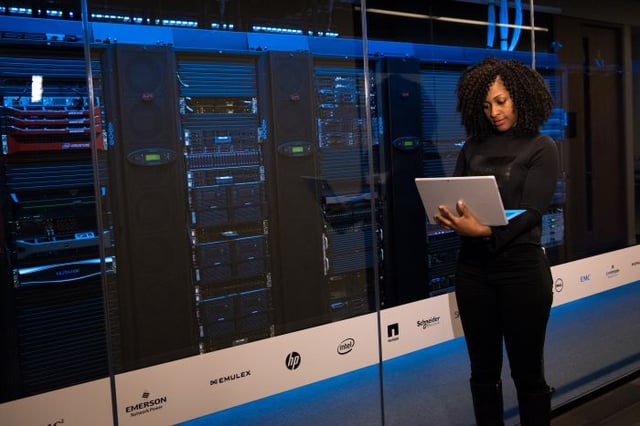Five Best Practices for Disk Drive Storage Decisions It’s hard to believe, but solid state disks (SSDs) are already becoming old hat in the enterprise. As infrastructure becomes more modular, designers are increasingly turning to flash technology and even on-server and in-memory systems to handle high-speed, mission-critical storage responsibilities. And this trend is not only […]

Five Best Practices for Disk Drive Storage Decisions

It’s hard to believe, but solid state disks (SSDs) are already becoming old hat in the enterprise.
As infrastructure becomes more modular, designers are increasingly turning to flash technology and even on-server and in-memory systems to handle high-speed, mission-critical storage responsibilities.
And this trend is not only affecting high-end systems. Mid-range solutions like the Hitachi Unified Storage Virtualization Machine (HUS VM) are employing all-flash technology that is normally reserved for top-of-the-line systems. With the integration of the Accelerated Flash module into the HUS platform, mid-level enterprises will instantly see performance double to 1 million IOPS, while gaining up to 1.6TB of capacity using a fraction of the footprint of a standard SSD. The system utilizes a multicore, multithreaded controller chip that takes care of optimization tasks like compression and wear-leveling without diminishing overall read/write performance.
Hitachi executives are quick to point out that, despite their confidence in the rapid uptake of flash technology, it is by no means a full replacement of existing storage formats. As the company’s Vivekanand Venugopal told CIOL, the choice of storage media should be based on the performance needs of the application and the business objectives of the organization. Through advanced software and controller-level intelligence in the Hitachi Universal Platform, the company hopes to make it easier for the enterprise to deploy a range of storage solutions and then provide a common interface with which to direct data loads to the appropriate tier. Ultimately, the company aims to improve storage performance across the board while lowering TCO by about a third.
Of course, other storage firms aren’t blind to the possibilities of flash either. EMC recently announced the impending acquisition of ScaleIO, an Israeli firm that specializes in server-side storage management designed to pool multiple media types including SSDs, flash-based PCIe cards and even hard disk drives, as virtual SANs. According to EMC’s Zahid Hussain, the Elastic Converged Storage (ECS) system is intended to form the basis of an entirely new scale-out server platform that can support applications ranging from VDI and virtual computing to database and HPC deployments. Again, the overarching goal is not to pitch flash as a solution for all storage needs but as one tier in a diverse, highly automated storage infrastructure.
Flash is also emerging as a nifty solution for specialized appliances, particularly those that deal with Big Data loads. Oracle, for example, has upped the capacity of its in-memory Exalytics appliance with additional DDR and flash memory components. The new X3-4 box now sports upwards of 5.4TB of storage and 2.4TB of flash cache, which should tide over heavy database users until the new Xeon E7 processors are available from Intel. According to Oracle, the new configuration should provide a whopping 25-fold increase in execution speed for Essbase loads compared to standard disk drives.
None of this would be possible if not for the fact that the cost of enterprise-grade flash is falling rapidly now that volume-level shipments are starting to kick in. As organizations gravitate more toward speed in their storage infrastructure rather than capacity, it is likely that solid state systems will end up supporting more than just the web-facing, transactional applications that are its current bread and butter.
It’s been a long time coming, but it finally seems that storage infrastructure will close the throughput gap with its server and networking counterparts.











